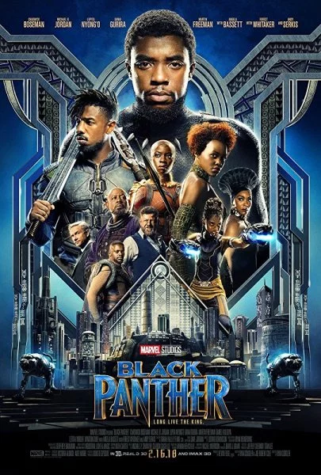Dark figures of crime

June 17, 2019
Crime is a danger that is quite well known around all parts world and can happen anywhere, even to you. It can come in all shapes and sizes. Their can be global war crimes all the way to a corner store robbery. The range is huge, but the most important thing is that criminals are held accountable for their actions.
The rule of crime is traditionally punished for being unlawful and a danger to society. This is true except for dark figures of crimes. The issue of dark figures of crime is an issue not brought up enough and needs to be addressed due to criminals in everyday society. The dark (or hidden) figure of crime is a term employed by criminologists and sociologists to describe the amount of unreported or undiscovered crime. It also refers to crimes that are unknown to all outside parties or law enforcement not accepting that the law has been broken. Thus, the dark figure of crime (or hidden crime) can be explained as those crimes that are not reported to the police or law enforcement agencies that may or may not have occurred in a specific period of time, whether only known to one person (victim) or more (witnesses) persons who may decide not to report such crimes. This gap between reported and unreported crimes calls the reliability of official crime statistics into question, but all measures of crime have a dark figure to some degree.
This is a pressing issue that isn’t brought up due to it being undiscovered. It is overall important to address unreported crimes in society due to the need to punish criminals. This is because there are a lot of crimes that go under the radar. An example is how around 50-60% of crimes go unreported such as rapes, burglaries, and robberies so it shows that crimes in society are appearing more than we think.
Crimes go unreported for various reasons, whether it’s from fear of reporting the crimes or from a fear that the police can’t help. It can even be simple things like family matters that would prevent someone from reporting crimes. The failure to report these crimes raises questions about the accuracy of crime statistics. More than half of the nation’s violent crimes, or nearly 3.4 million violent victimizations per year, went unreported to the police between 2006 and 2010, according to a new report published by the Bureau of Justice Statistics. During these times, dark figures of crimes were present all over the place. Victims most commonly did not report violent victimizations to the police because they dealt with the crime in another way, such as reporting it to another official or handling it privately.
“I think there are lots of reasons why people don’t report crimes. I think sometimes it’s because they’re afraid, sometimes they don’t trust the police or authorities, sometimes it because they might not thing its that big of a deal. There are lots of reasons people don’t report crime,” said Ms. Leimsider, assistant principal of the NYC iSchool. Among unreported violent victimizations, the percentage of victims who believed the police would not or could not help doubled, from 10 percent in 1994 to 20 percent in 2010. The unwillingness of the public to report crime stems from various reason and motives. However, the dark figure of crime still remains a pivotal point amongst citizens and criminal experts alike. DNA evidence has become a critical factor in achieving justice for survivors of sexual violence, but there are still challenges in the way evidence is collected, stored, tracked, and used to hold perpetrators accountable.
DNA and Forensics
DNA evidence is a critical factor in identifying, prosecuting and convicting perpetrators, but in some ways, the effectiveness of DNA evidence has been the

source of its biggest obstacle. One example is sexual assault. According to Rainn, “The overwhelming backlog of DNA evidence is currently one of the biggest obstacles to prosecuting perpetrators of sexual violence.” In the last decade, cities and states across the country have discovered DNA evidence from thousands of untested rape kits that were collected by law enforcement or during sexual assault forensic exams, but never sent to crime labs for analysis.
This is sometimes referred to as the “hidden backlog.” Failure to track kits once they have been collected and to advance them to crime labs for testing has been a major source of this problem. Increased public attention has led to states actively auditing their law enforcement evidence rooms and other relevant spaces. In some instances, the volume of untested DNA evidence has outpaced the resources to test, process, and profile samples in crime labs. This has led to evidence being stored at crime labs, but remaining untested for prolonged periods of time. With the support of the federal government, the problem of untested kits at crime labs has significantly decreased.
Rainn goes on to say, “However, it remains imperative to ensure that public crime labs have the necessary capacity to keep up with testing demands.” As DNA evidence proved to be a useful tool in both investigation and prosecution of sex  crimes, collecting this evidence became standard procedure for law enforcement agencies across the country.
crimes, collecting this evidence became standard procedure for law enforcement agencies across the country.
Rainn states, “Today, all 50 states and the federal government collect DNA from perpetrators convicted of certain crimes.”
An increasing number of states have expanded their laws to collect DNA from people arrested or accused of certain felonies and, in some cases, certain misdemeanors. In addition, DNA evidence can be collected directly from crimes scenes and during sexual assault forensic exams.
A lot of this DNA forensics can be seen in media detective shows. Dark figures are mainly represented in media like action movies and shows.
Superheroes as Dark Figures
Superheroes, being a huge part of media nowadays, have a lot of representation in their movies. Whether it’s female representation or black representation, the types of superheroes movies vary from all kinds. These movies have a lot of influence on people and their thinking about society.
Th e movie “Black Panther,” which is a movie about a black superhero, brought a lot of light on African representation in film and in society.
e movie “Black Panther,” which is a movie about a black superhero, brought a lot of light on African representation in film and in society.
Time states that “Black Panther was seen as a movie that started to influence American culture.” Movies like 2017’s “Wonder Woman” and 2019’s “Captain Marvel” showed female superheroes in action and represented females around the world.
The New York Times stated that “By now, audiences have grown accustomed to superhero movies that put women in the spotlight.”
The dark figures of crimes are also represented through these fictional superheroes. Characters like Spiderman show a little bit of this, but no other superhero represents dark figures of crime more than DC’s, Batman.
“When I hear Dark figures of Crime Batman comes to my mind. I think of Gotham City, ” said Ms Bailey, principal of the NYC iSchool.
Batman represents the will to fight and correct the criminal underbelly. Batman was first created in 1939. In early 1939, the success of Superman in Action Comics prompted editors at National Comics Publications (the future DC Comics) to request more superheroes for its titles. In response, Bob Kane created “the Batman.”
The story of Batman starts with a kid who lost his parents to a criminal shot who them to death. This causes him to become a symbol of fear that; a bat that protects the city of Gotham from underworld crime. At first, Bruce Wayne became Batman in order to fight organized crime, which was an epidemic in America at the time Batman was first conceived in 1939.
At the beginning of Batman’s crime-fighting career, he was hunted by the Gotham Police Department just like any other common criminal. Only after his methods proved effective did the police change their mind and work with Batman. But they never took Batman off their wanted list; he had to remain an official wanted fugitive even  if the police department was willing to work with him.
if the police department was willing to work with him.
Bruce Wayne spenta lot of time talking about fear, justice, and how Batman is supposed to be a symbol. Batman is a hero who shows the danger of dark figures of crime. Even if Batman is just fiction, it’s a representation of why dark figures are important for the safety and well being of the public.
Statistics
According to the Bureau of Justice Statistics, “During the five-year period from 2006 to 2010, about three in 10 crimes involving a weapon and an injury went unreported to police.” Among these, the most common reason for not reporting was fear of retaliation or of getting the offender into trouble. This fear was also the most common reason victims did not report intimate partner violence to the police.
Crimes perpetrated by someone the victim knew well, such as a neighbor, coworker or teacher, or by a casual a cquaintance were more likely to go unreported than crimes committed by a stranger. Serious violent crimes (defined as rape or sexual assault, robbery, or aggravated assault) were less likely to go unreported to the police in 2010 than in 1994.
cquaintance were more likely to go unreported than crimes committed by a stranger. Serious violent crimes (defined as rape or sexual assault, robbery, or aggravated assault) were less likely to go unreported to the police in 2010 than in 1994.
According to the Bureau of Justice Statistics, “The percentage of unreported serious violent victimizations declined from 50 percent in 1994 to 42 percent in 2010.” Unreported simple assault (assaults not involving an injury or a weapon), and property crime victimizations followed a similar pattern during the same period. The percentage of unreported simple assaults declined from 63 to 51 percent, and unreported property crime declined from 67 percent to 60 percent.
“On average, an estimated 211,200 rapes and sexual assaults went unreported to police each year between 2006 and 2010.”
Although the serious violent crimes were generally less likely to go unreported to the police than simple assaults, a higher percentage of rape or sexual assaults than simple assault victimizations went unreported over the five-year period. Bureau of Justice Statistics states, “From 2006 to 2010, a greater percentage of victimizations against men than women were not reported to the police.”
over the five-year period. Bureau of Justice Statistics states, “From 2006 to 2010, a greater percentage of victimizations against men than women were not reported to the police.”
A greater percentage of violent victimizations against white non-Hispanics than black non-Hispanics went unreported to the police. Among victims of violence, women were more likely than men to say they did not report to the police because they were afraid of reprisal or getting the offender in trouble.
Majority of Sexual Assaults Are Not Reported to
The Police
Only 230 out of every 1,000 sexual assaults are reported to the police. That means about 3 out of 4 go unreported
- Individuals of college-age 2
- Female Students: 20% report
- Female Non-Students: 32% report
- The elderly: 28% report3
- Members of the military: 43% of female victims and 10% of male victims reported
Reasons Victims Choose to Report—or Not to
Of the sexual violence crimes reported to police from 2005-2010, survivors reportedly gave the following reasons for doing so
- 28% to protect the household or victim from further crimes by the offender
- 25% to stop the incident or prevent recurrence or escalation
- 21% to improve police surveillance or they believed they had a duty to do so
- 17% to catch/punish/prevent an offender from reoffending
- 6% gave a different answer or declined to cite one reason
- 3% did so to get help or recover the loss
Of the sexual violence crimes not reported to police from 2005-2010, the victim gave the following reasons for not reporting
- 20% feared retaliation
- 13% believed the police would not do anything to help
- 13% believed it was a personal matter
- 8% reported to a different official
- 8% believed it was not important enough to report
- 7% did not want to get the perpetrator in trouble
- 2% believed the police could not do anything to help
- 30% gave another reason or did not cite one reason

Importance/Awareness
An issue as unaddressed as this one is bound to bring future consequences. Safety of the public is not ensured if people don’t know the dangers around. Kids and young ones are at major risk of this. Teachers wish for school to be a place where everyone can feel safe without fear of danger or getting hurt. That’s hard due to the presence of lurking criminals. This will lead to a world where most of the crime isn’t even known to the public.
The NYU Dispatch states, “The rape kit backlog is currently one of the biggest obstacles to prosecuting perpetrators of sexual violence.” Imagine your child was in danger because a man/woman is not locked up for his crimes. This is a simple topic that can easily get out hand. Out of every 1,000 sexual assaults, 310 are reported to the pol ice. Everyone should have the right to feel safe within their respective communities.
ice. Everyone should have the right to feel safe within their respective communities.
“Crime victim surveys or self-report studies usually reveal the reasons why people fail to report crimes. With reports of police brutality and its substantial media coverage in 2012-2013, it is no surprise that people may have lost faith in the police service, which also impacts the public’s decision on whether or not to report the crime.” – The NYU Dispatch. The consequence of it all is that people may report less and less crime. Police and victims alike will be unaware of such unreported crime and may lead to someone else being victimized.
“Crime goes up if it’s not reported. Knowing that there are crimes that aren’t being reported makes me feel less safe in society. It’s a scary thing to think about it” Oliver Sulivan, Student of Edward R. Murrow High School.
The Future of Dark Figures
It’s a pressing issue that brings up things like why they weren’t reported and were they blackmailed. We need to acknowledge that they exist and find a solution to put these hidden criminals away. It’s an issue that a lot of people would care about if it was addressed and knew about. Worse still, the crimes that are reported are usually never solved. In 2016 a miserable 42 percent of violent crime and an even more miserable 36 percent of property crime was reported to US authorities.
That being said, this trend may be changing – if only slightly. The instance of reporting a serious violent crime (defined as rape or sexual assault, robbery, or aggravated assault) is improving. It was less likely to go unreported to the police in 2010 than it was in the year 1994, and the instances of unreported serious violent victimizations declined from 50 percent in 1994 to 42 percent in 2010. It’s important to acknowledge these crimes and how to solve them. One important realization is that we need to educate people.
“Yeah, you should be concerned about dark figures because when crimes go unchecked and nobody knows what their doing they have a lot more freedom.” Amdo Carey, Student of Brooklyn Technical High School.
School.
The more informed people are, the easier it is to promote safety. It would be a huge benefit to society and to raise awareness of an issue that can prove troublesome in the future. Another important realization is the ability to provide comfort to those who feel like they can’t report crimes due to fear or people who just don’t feel like they can get help from the police. Many people just don’t trust the police, so allowing comforting to those in need is an important part to help those feel who are unhappy to be strong.
This temporary solution would help people open up and get one step closer to closing in on criminals. Last and most important is the ability to notify your community if something happens that isn’t solved right away. If a community together can stay safe it will allow for the ability of dark figures of crime to fade away. Not saying these can all be done but rather solutions for a short term.
Overall, it has to be society that realizes the importance of dark figures of crime. If threats like this can be noticed publicly, people who deserve punishment can be dealt with. Small changes like this in everyday life can make us just a bit safer.

